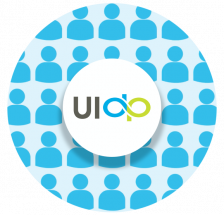Winning Together: Research Development Teams for Complex Proposals
 Nov. 5, 2024—When it comes to complex research proposal development, two heads are better than one—and four or five or more can be unstoppable. One way to tackle intricate, interdisciplinary proposals is to assemble a team of research development professionals with specialized expertise to take on every detail of challenging proposals with efficiency and consistency. A savvy team can serve as the “glue” for these efforts and effectively manage the complexity of assembling proposals and allow their organizations to pursue even more high-impact awards.
Nov. 5, 2024—When it comes to complex research proposal development, two heads are better than one—and four or five or more can be unstoppable. One way to tackle intricate, interdisciplinary proposals is to assemble a team of research development professionals with specialized expertise to take on every detail of challenging proposals with efficiency and consistency. A savvy team can serve as the “glue” for these efforts and effectively manage the complexity of assembling proposals and allow their organizations to pursue even more high-impact awards.
New proposals, new teams
Funding agencies worldwide are realizing the power of crossing sectors and silos to generate breakthroughs to address grand challenges. Contemporary solicitations are increasingly complex and competitive, from calls jointly funded by industry partners to those for developing cross-sector or multidisciplinary teams. Traditionally, research proposals were individually developed by faculty, perhaps supported by a departmental administrator or postdoc. But developing research proposals is just one facet of a faculty member’s work, so taking on more challenging proposals may not be the optimal approach—and most research-intensive faculty would prefer to spend less time writing proposals and more time conducting and publishing the research.
Last year, UIDP’s 3-Minute Read on the rise of proposal development positions in academia noted a shift from PIs developing proposals to having dedicated professionals take on more of the burden. Now, the research ecosystem is seeing professional teams positioned to better support their organization’s efforts to secure research funding. These teams typically include researchers with proposal-development experience, leaders with relationships across sectors, project managers, and grant writers. Research development teams can efficiently tackle the various aspects of proposals simultaneously, ensuring that all elements of the solicitation are addressed quickly and thoroughly. This helps to standardize and streamline the process, leading to better, more competitive proposals.
Real teams
UIDP member Johns Hopkins University leverages the proposal team approach. The Johns Hopkins team assists with large-scale proposal development and other services to support the university’s research competitiveness. Beyond proposal development, the team offers university-wide training on different sponsors and grant types. It promotes funding opportunities and connects PIs with resources across the university. It can also link projects with potential collaborators. The services are not limited to federal grant opportunities, enabling the team to work with all types of sponsors and collaborative projects. Teams from across the institution can submit a request for assistance from the research development team, although working with the team is not required.
UIDP member University of Chicago employs a research development team in its biological sciences division that helps develop proposals or facilitates the submission of complex research proposals. As part of their approach, they divide the proposal process into five stages: ideate, design, draft, edit, and finalize (and involvement early in the process typically yields better results). The university’s research development office provides resources to coordinate project-specific teams for proposal development and connect PIs with resources, potential partners, and programs.
Ultimately, research development teams support PIs and their projects by relieving some of the proposal development burden. Allowing a specialized team to tackle multichannel, multidisciplinary proposals means researchers can spend their time mentoring, investigating, and getting to important outcomes.
Why it matters
Combining expertise and resources can accelerate finding solutions to research challenges. The same can be said for crafting competitive proposals to secure funding. As more solicitations call for complex, interdisciplinary, or multichannel proposals, using teams of research development professionals can streamline the process by leveraging a divide-and-conquer approach. More organizations will likely find that two heads are indeed better than one and look to the research development team model for a strategic edge to strengthen their position in the research community.
We want to hear from you. Does your organization have a research development or similar team? Let us know on LinkedIn.


